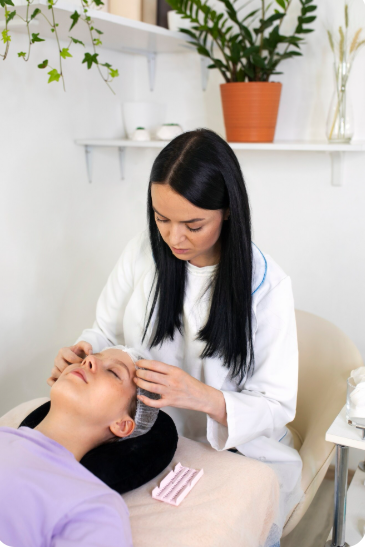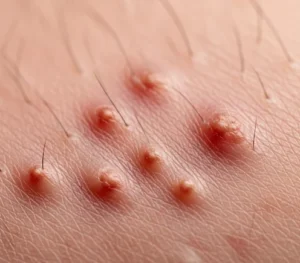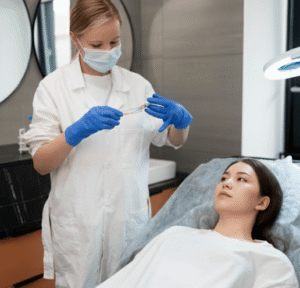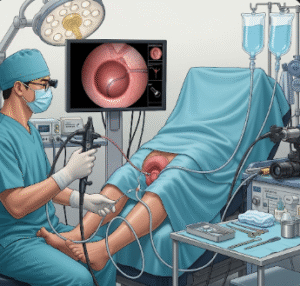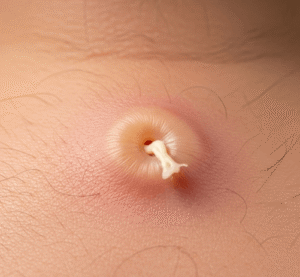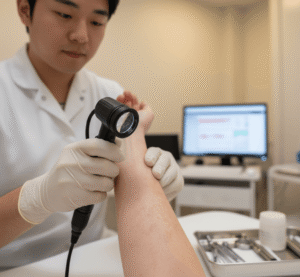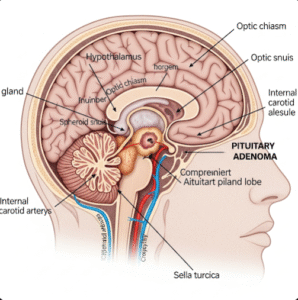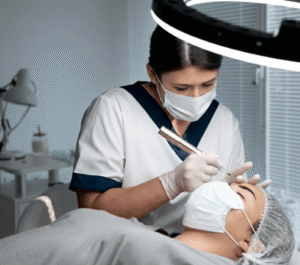What It Is
Canthopexy is a minimally invasive eyelid surgery that tightens and supports the outer corner of the eye (lateral canthus) without cutting or repositioning the tendon, unlike canthoplasty. The procedure involves suturing the lateral canthal tendon to reinforce the eye’s shape and prevent sagging. It is commonly performed to correct or prevent eyelid laxity, giving the eyes a firmer and more youthful look.
Why It’s Done
Patients undergo canthopexy to:
- Correct mild eyelid laxity or drooping of the outer corners
- Prevent sagging after lower eyelid surgery (blepharoplasty)
- Enhance the almond or elongated eye shape
- Restore youthful eyelid tone
It is particularly suitable for patients with early signs of aging or those at risk of developing droopy eyelids after cosmetic procedures.
Alternatives
- Non-surgical options: Botox or dermal fillers may temporarily improve the appearance of drooping eyes but do not address laxity.
- Other surgical options: Lateral canthoplasty is used for more severe cases, where full tendon repositioning is required.
Preparation
- Consultation with a Korean plastic surgeon to assess eyelid anatomy, skin tone, and tendon strength
- Patients are advised to avoid smoking, alcohol, and blood-thinning medications before surgery
- Preoperative evaluation may include photography and digital imaging to determine the desired outcome
How It’s Done
- Usually performed under local anesthesia with sedation
- A small incision is made at the outer corner of the eye
- The lateral canthal tendon is tightened with sutures to reinforce its position
- Surgery takes 30 minutes to 1 hour and is often an outpatient procedure
Recovery
- Minimal downtime compared to canthoplasty
- Swelling and mild bruising last 5–7 days
- Stitches are usually removed within a week
- Patients can return to normal activities within 1–2 weeks, avoiding heavy exercise and eye rubbing
Possible Complications
- Temporary swelling, bruising, or eye dryness
- Minor asymmetry between eyes
- Rare risks: infection, scarring, or over-tightening of the eyelid
- Generally lower risk compared to canthoplasty
Treatment Options in Korea
Diagnosis
Korean surgeons perform detailed eyelid laxity tests and use imaging to evaluate tendon strength and determine if canthopexy is sufficient or if canthoplasty is needed.
Medical Treatments
Non-surgical treatments (Botox, fillers) can provide temporary lifting but do not replace the structural support provided by canthopexy.
Surgical or Advanced Therapies
Korean clinics offer advanced suture-based canthopexy techniques that are minimally invasive, reduce scarring, and provide long-lasting results with natural eye shapes.
Rehabilitation and Support
Post-surgery care includes cold compresses, prescribed eye ointments, and regular follow-ups. International patients receive personalized recovery plans and aftercare assistance.
Advantages of receiving treatment in Korea: Expertise in Asian eyelid anatomy, minimally invasive methods, natural results, faster recovery, and advanced surgical facilities make Korea a leading destination for canthopexy.

